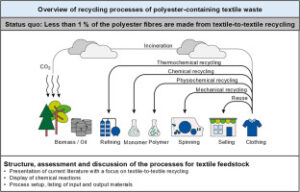Is Embroidered Chenille Suitable for Pants?
In the world of fashion and sewing, fabric compatibility is crucial. It determines not only the visual appeal but also the functionality and longevity of a garment. This article explores whether embroidered chenille is suitable for pants, offering insights into fabric compatibility, benefits, challenges, and practical sewing tips.
Compatibility Analysis
Yes, embroidered chenille can be suitable for pants, but several factors must be considered. The texture of chenille, known for its velvety feel, adds a luxurious touch to garments. However, its weight and lack of stretch can pose challenges. When combined with embroidery, these fabrics create a rich, textured look but require careful handling due to their thickness and care needs.
Key Factors:
- Texture: Chenille’s plush surface pairs well with embroidery, adding depth and interest.
- Weight: Chenille is heavier, which can affect the drape of pants.
- Stretch: Limited stretch requires precise fitting and pattern selection.
- Care Requirements: Both chenille and embroidery need gentle washing and handling.
- Durability: Chenille is durable but may wear differently from embroidered sections.
Fabric Properties Comparison Table
| Property | Chenille | Embroidered Fabric |
|---|---|---|
| Fiber Content | Mostly synthetic or cotton | Varies based on base fabric |
| Weight and Thickness | Heavy, plush | Medium to heavy |
| Breathability | Moderate | Depends on base fabric |
| Stretch and Elasticity | Low | Low to moderate |
| Wrinkle Resistance | Good | Varies |
| Care Instructions | Hand wash, low iron | Gentle wash, low iron |
| Durability | High | High if well-constructed |
Benefits of Mixing These Fabrics
- Enhanced Texture: The combination offers a rich tactile experience, perfect for statement pieces.
- Improved Comfort: Chenille’s softness enhances comfort despite its weight.
- Better Drape: When tailored well, the blend provides a structured yet fluid silhouette.
- Cost-Effectiveness: Mixing fabrics can reduce costs by using less of the more expensive embroidered material.
- Seasonal Versatility: Suitable for cooler months due to its warmth.
- Design Possibilities: Offers a canvas for creative embroidery patterns.
Potential Challenges
- Different Shrinkage Rates: Pre-wash fabrics to minimize discrepancies.
- Conflicting Care Requirements: Use the gentlest care method applicable to both.
- Texture Clash or Pilling: Regularly de-pill and use compatible fabrics.
- Seam Puckering: Use stabilizers and proper tension settings.
- Color Bleeding or Fading: Test for colorfastness before combining.
Sewing & Styling Tips
- Sewing Techniques: Use a walking foot to handle thick layers smoothly.
- Needle and Thread Recommendations: Use a size 90/14 needle with polyester thread for durability.
- Interfacing and Stabilizer Needs: Apply lightweight interfacing to maintain structure.
- Seam Finishing Methods: Consider French seams for a clean finish.
- Pattern Selection Advice: Choose simple patterns that highlight fabric texture.
- Styling Ideas: Pair with simple tops to let the pants stand out; consider chenille for home decor like cushion covers for added luxury.
Care & Maintenance Guide
- Washing Instructions: Hand wash or use a delicate cycle with cold water.
- Drying Recommendations: Lay flat to dry to prevent stretching.
- Ironing and Steaming Tips: Use a low setting and press on the reverse side.
- Stain Removal: Spot clean with mild detergent.
- Long-Term Care: Store flat to avoid creasing and protect embroidery.
FAQ Section
- Can you wash chenille and embroidered fabric together? Yes, but use a gentle cycle and cold water.
- Will chenille shrink more than embroidered fabric? Chenille may shrink slightly; pre-washing is recommended.
- What needle size should I use for sewing these fabrics together? A size 90/14 needle is appropriate.
- Can you mix chenille and embroidered fabric in one garment? Yes, with careful planning and execution.
- How do you prevent puckering when combining these fabrics? Use stabilizers and adjust sewing machine tension.
- Is it okay to mix chenille and embroidered fabric for upholstery? Yes, but ensure durability and proper care.
- What’s the best way to finish seams with these fabrics? French seams or serging for a neat finish.
In conclusion, while embroidered chenille can be used for pants, it requires thoughtful consideration of fabric properties and care. By following the tips and guidelines provided, you can create stylish and durable garments that showcase the beauty of these materials.

Leave a Reply